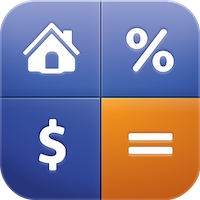Nebraska Mortgage Overview
Nebraska has a median population of 1.9
million people and has plenty of opportunities for employment in major
industries. It's a great place to live if you love friendly people, beautiful
scenery, and winter weather.
If you're thinking about buying a home in
Nebraska, here are your loan options:
Nebraska conventional loans
Traditional
financing is conventional financing. You don't need 20 percent down. First-time
homebuyers need 3 percent and subsequent buyers 5 percent for this financing.
You need good credit - usually around 660 and low debt ratios around 36
percent. If you put down less than 20 percent, you'll pay PMI but only until
you have 20 percent equity in the home.
Nebraska FHA loans
FHA loans are a
conventional loan alternative. They allow lower credit scores of 580 with a 3.5
percent down payment or 500 - 579 with a 10 percent down payment. FHA loans
have flexible underwriting guidelines, and in exchange charge mortgage
insurance for the life of the loan. Borrowers may use gift funds or down
payment assistance to cover the down payment.
Nebraska VA loans
Veterans of the military or
National Guard may be eligible for 100 percent financing from the VA. To
qualify, you need a 620 credit score and average debt ratio. You must prove you
have enough funds for the daily cost of living and have anything but a
dishonorable discharge. VA loans don't charge mortgage insurance but there is
an upfront funding fee.
Nebraska USDA loans
If living in rural parts
of Nebraska is on your bucket list, use USDA financing to make it happen. The
program is for low to moderate-income families with at least a 640 credit
score. You don't need a down payment and have flexible guidelines along with
low mortgage insurance rates for the life of the loan.
First-Time Homebuyer Programs in Nebraska
First-time Homebuyer Loan
The Nebraska
Investment Finance Authority provides low interest loans for eligible
first-time buyers. You must make less than the program income limits and have a
640 or higher credit score. The NIFA has other underwriting guidelines
including the need to take a homebuyer education course before you get
financing.
Homebuyer Assistance Program
If you have at
least $1,000 to invest in a home the Homebuyer Assistance Program may help you
buy a home sooner. It's a first and second loan program. The first loan has a
below-market interest rate and the second covers the closing costs and down
payment. The second loan is a maximum of 5% of the purchase price or $10,000,
whichever is less. The second loan has a 1% interest rate and a 10-year term.
First Home Grant Program
If your household
income is 50% or less of the area's average income, the First
Home Grant Program provides a first mortgage with below-market rates and a
grant for the down payment and closing costs. The grant is a maximum of $5,000
and isn't repayable.
| 
